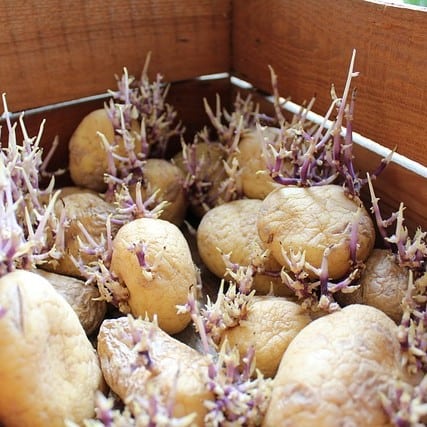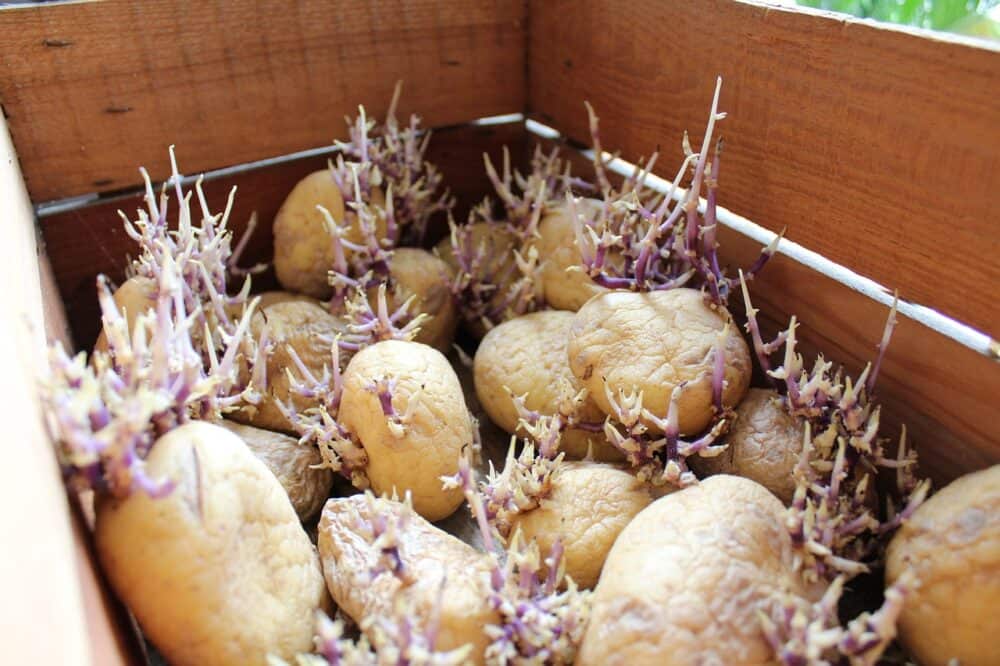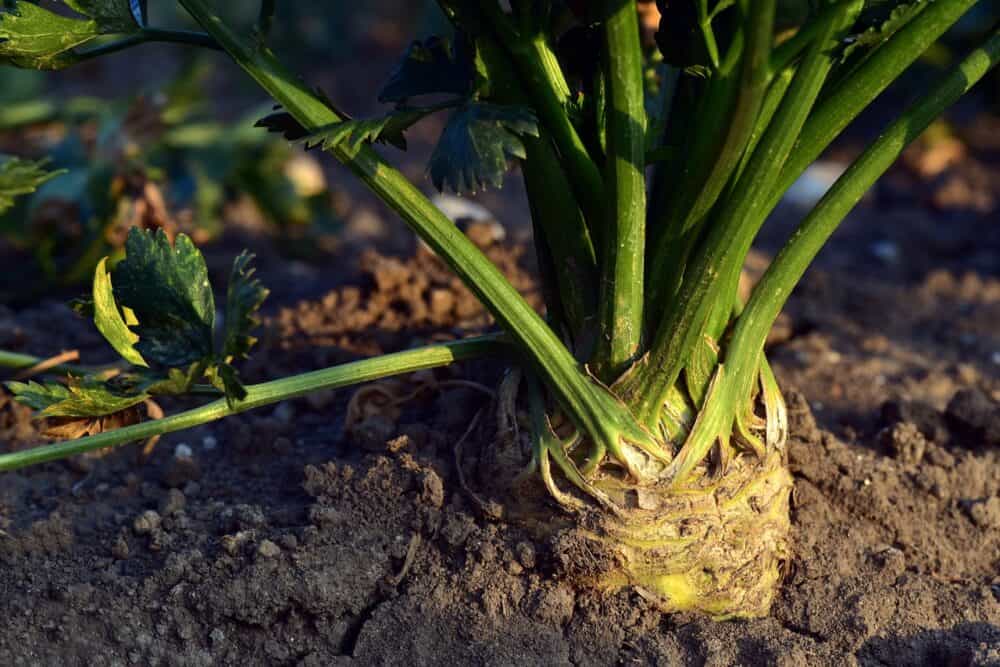
Vegetables That Can Be Replanted for Next Season’s Crop
Table of Contents
Many vegetables can be replanted seasonally, making it possible to enjoy fresh produce from your garden beds with minimal costs and waste. A thriving vegetable garden can be sustained year after year with the right strategies and plant choices. Replanting is a great way to stretch each growing season and take advantage of all your garden’s potential, whether you are starting in early spring, preparing for cool-season crops, or planning a winter garden. Here’s a guide to the top vegetables you can replant for a continuous, sustainable harvest throughout the year.
Potatoes

Potatoes are an excellent warm-season crop that can be replanted year after year. They grow well in sandy soil with good drainage and require a well-prepared garden bed with ample organic matter. Save small potatoes from last year’s crop, or cut larger potatoes with “eyes” into sections and plant them a few inches deep in early spring or late summer for successive harvests.
Planting Tips:
- Best time: Early spring or late summer, depending on your region’s last frost date.
- Sunlight: Full sun
- Soil: Loose, sandy soil with good drainage
Tomatoes
Tomato seeds can be saved and replanted each year. Save seeds from fully ripe tomatoes, dry them, and store them in a cool, dry place. Like peppers, start them indoors and transplant them outdoors after the last frost for the best results.
Planting Tips:
- Best planting time: Start indoors in early spring
- Soil requirements: Nutrient-rich, slightly acidic soil
- Watering needs: Consistent watering; avoid getting the leaves wet to reduce disease risk
Green Onions
Green onions are an easy way to keep a continuous harvest going. Simply replant the root ends in moist soil, and they’ll sprout new green tops within days. This type of vegetable is highly adaptable to cool-season and warm-season crops, making it an excellent choice for vegetable gardening year-round.
Planting Tips:
- Best time: Early spring, or anytime during the cool season
- Sunlight: Full sun to partial shade
- Soil: Moist, well-drained soil
Garlic

Garlic is best replanted in the fall, which allows it to establish roots before winter. Garlic thrives in garden beds with well-drained soil and some added organic matter. Plant individual cloves in early fall for harvest the following summer.
Planting Tips:
- Best time: Fall, ideally before the first frost
- Sunlight: Full sun
- Soil: Well-drained, enriched with compost or soil amendments
Peppers
You can save seeds from ripe peppers to replant next season. Dry the seeds thoroughly before storing them, and plant them indoors a few weeks before the last frost. Once the seedlings are strong enough, transplant them outdoors for a new crop of peppers.
Tips for Replanting:
- Best planting time: Start indoors in early spring
- Soil requirements: Rich, well-drained soil
- Watering needs: Moderate; avoid waterlogged soil
Lettuce
Lettuce, including varieties like romaine lettuce and leaf lettuces, is a great choice for a cool-weather crop. By saving seeds or replanting the base of harvested heads, you can regrow lettuce continuously. For best results, start replanting in early spring and succession plant every few weeks.
Planting Tips:
- Best time: Early spring and early fall
- Sunlight: Full sun to partial shade
- Soil: Moist, fertile, well-drained soil
Sweet Potatoes
Like regular potatoes, sweet potatoes can be replanted by saving a few tubers. Place a sweet potato in a jar of water with one end submerged, and new sprouts (known as slips) will begin to form. Once the slips are about six inches long, remove them and place them in water until they develop roots, then transplant them into the soil.
Planting Tips:
- Best planting time: After the last frost
- Soil requirements: Sandy, well-drained soil
- Watering needs: Regularly, especially during the growing seasonSwiss Chard: An Easy-to-Replant Leafy Green
Celery

Celery can be replanted from the base of harvested stalks. Set the base in moist soil or start it in a dish of water to encourage root growth. Celery prefers cooler temperatures and can tolerate cold weather, making it ideal for cool-weather crops in the garden.
Planting Tips:
- Best time: Early spring or late summer for a fall crop
- Sunlight: Full sun to partial shade
- Soil: Fertile, well-drained soil with plenty of organic matter
Carrots (For Greens)
While you can’t regrow carrot roots, you can replant the carrot tops to harvest fresh carrot greens. Place the carrot tops in a shallow dish with water, and new greens will start to sprout. These greens are edible, flavorful, and can be used in salads, soups, or as garnishes.
Tips for Replanting:
- Best planting time: Spring
- Soil requirements: Standard garden soil
- Watering needs: Keep soil moist, especially in early growth stages
Ginger
Ginger is an excellent perennial plant that you can replant indefinitely. Start with a fresh piece of ginger root with visible “eyes” or buds. Plant it just beneath the soil’s surface, and keep the soil moist. Ginger will begin to sprout and, over time, grow into a larger root. Harvest part of the root and leave some in the ground to regrow next season.
Planting Tips:
- Best planting time: Late spring or summer
- Soil requirements: Loose, well-drained soil, enriched with organic matter
- Watering needs: Keep soil consistently moist
Benefits of Replanting Vegetables
Cost Savings: Replanting vegetables can drastically reduce gardening costs, as you don’t need to buy new seeds or seedlings each season.
Sustainability: By regrowing vegetables, you reduce food waste and contribute to a more sustainable environment by minimizing the need for packaging and transportation.
Self-Sufficiency: Replanting provides a reliable source of food. As you gain experience, you can maintain a nearly continuous supply of vegetables from season to season.
Conclusion
Replanting vegetables offers a sustainable, cost-effective way to enjoy homegrown produce year-round and you can maximize harvests and keep your vegetable beds producing through the year. This approach is not only a great idea for savings but also a great way to reduce waste and enjoy fresher produce. So, whether you’re looking to extend your vegetable gardening season into the cooler months or make the most of hot weather crops, replanting is a strategy that will pay off season after season.



